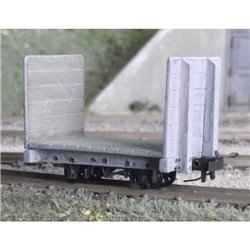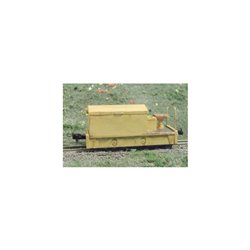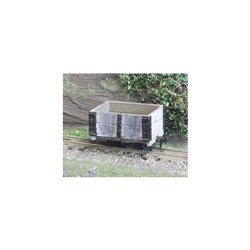Mainline Railways was a British model railway brand that operated between 1976 and 1983, introduced by Palitoy, the...
No products
Product successfully added to your shopping cart
There are 0 items in your cart. There is 1 item in your cart.
Search Tips
How do I model narrow gauge railways in O gauge?
There are many head spinning ways to approach modelling a narrow gauge railway in 0 gauge, that's what makes it so much fun! Before you can start enjoying yourself though, you have to decide which approach is right for you.
One of the reasons a lot of modellers choose to model narrow gauge in 0 gauge is because it's a challenge and certainly far removed from the world of universal standards and ready to run rolling stock.
In its most basic form you have your ordinary 0 gauge track (measuring 1.25" or 31.75mm between the rails). This track represents a real life standard gauge track (measuring 4ft 8 1/2 inch or 1.435m). On this 0 gauge track, you would typically run trains that represent full sized locomotives such as Mallard or Flying Scotsman. This would give those trains a scale of 1:43.5. So far so good!
Staying with this scale, a narrow gauge train will need narrower tracks to run on (just like in real life). These model tracks are called On30 tracks and have the same gauge as 00/H0 track (the difference being that On30 track has different sleeper spacing so they appear closer to narrow gauge tracks aesthetically).
If only modelling was that simple! Although the concept is sound, the scale will most likely change slightly. This is to do with where the model is manufactured, as always there are international differences between models resulting in UK 0 gauge narrow gauge stock having a scale of 1:43.5, European models 1:45 and USA models 1:48. All, though, will run on On30 track. Just to complicate matters On30 track has several aliases often being referred to as On2 1/2, O16.5 or Oe.
There are other ways to model narrow gauge in 0 gauge. Some modellers, for example, will start at the bottom and scale up by using original 0 gauge track and scratch-building narrow gauge rolling stock to fit giving it an approximate scale of 1:32. Others might want their model to represent a more obscure narrow gauge or even miniature railway prototype which will present even more choices and challenges. Of these, one of our favourites is 0-9 gauge.
0-9 gauge is a representation of a miniature railway that could be found on a private estate or industrial setting. These little trains are known as minimum gauge trains because they run on the smallest gauge of tracks that physics will allow. The result of this is that you have an 0 scale train running on N gauge track!
When you take into consideration all of the narrow-gauge variations and numerous ways to apply them to an 0 gauge layout, it becomes apparent that there is an almost infinite amount of ways to model a narrow gauge railway in 0 gauge. But as we mentioned at the beginning, that's what makes it fun!
Click here to receive the tips weekly in your mailbox. You can unsubscribe at any time.










